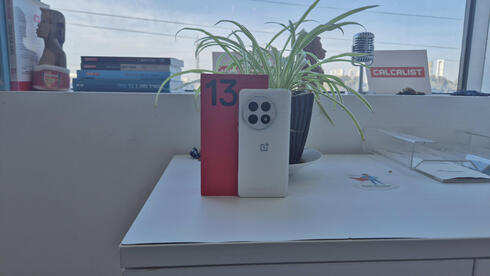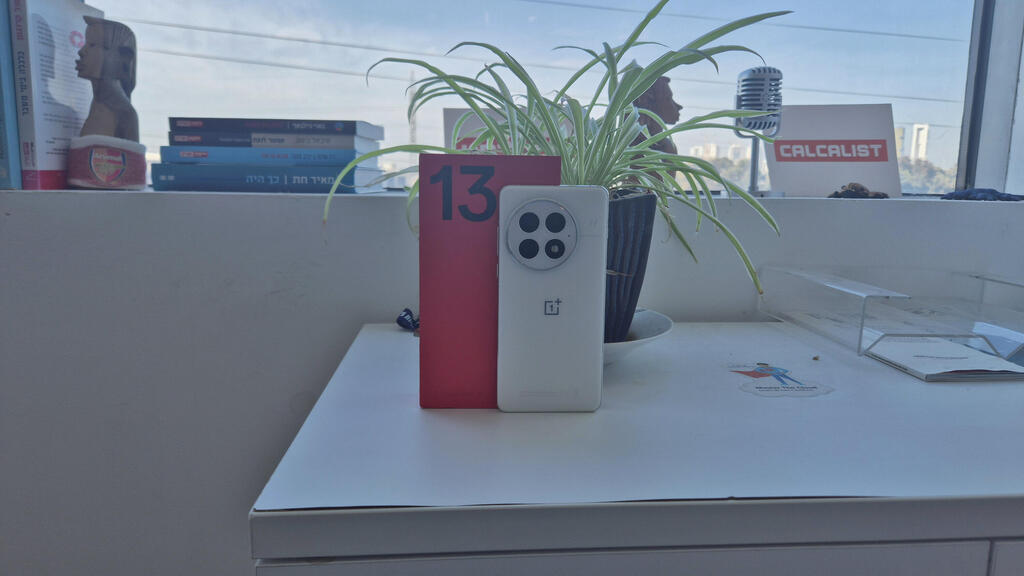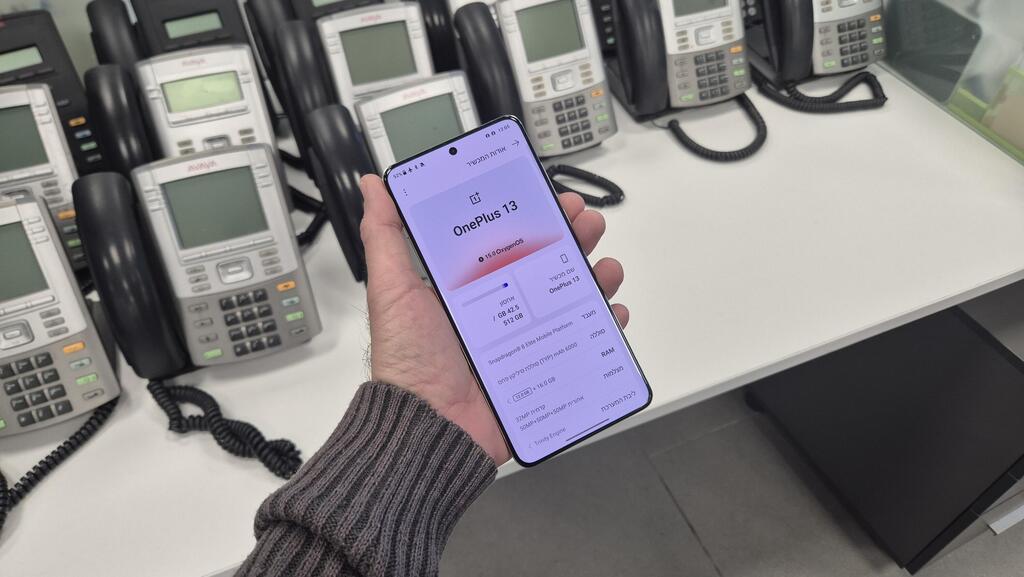
Smartphone review
OnePlus 13: A flagship that plays it safe
From enhanced durability to AI tools, the OnePlus 13 offers refinements, not revolutions.
Top Line
The OnePlus 13 is not particularly exciting and doesn't offer any groundbreaking innovations, but it does present several improvements—namely in the battery, device protection, and added AI capabilities that are seen in competitors' devices, though it lacks support for Hebrew. Despite the physical changes, it still feels large and heavy.
The device clearly shows why other companies are focusing on AI: it's difficult to showcase hardware innovations, and upgrading the processor has become a fairly standard upgrade. As a result, devices offer few changes compared to previous models.
The price remains unchanged, which is good news: around $1,100 for the higher-end model with 16GB of RAM and 512GB of storage, and around $1,000 for the "base" model with 12GB of RAM and 256GB of storage. While not cheap, the price is very competitive relative to similar or even identical devices from competitors.
It’s safe to say that these models are more than just "good enough" for many users—they can be an excellent choice for anyone in search of a flagship device.
Details
Smartphone manufacturers are rolling out new models with updated processors and features, and now it's OnePlus’ turn. The company recently launched its flagship device, the OnePlus 13, which bears a striking resemblance to the previous generation in terms of design. We took it for a test run to evaluate the changes.
Structure and Design: Still Large and Heavy
As is common in the mobile market, there are no major design innovations here. The screen remains 6.82 inches in size, and while OnePlus managed to remove a few millimeters from the device and reduce the weight by about 10 grams, it still feels large and heavy, weighing around 210 grams.
As usual, the left side features a switch that allows you to toggle between silent, vibration, or regular ringing modes. The rest of the design is standard—there is a power button on the right, with volume keys above it, a small selfie camera at the top of the screen, and no port for wired headphones.
On the back of the device, there's a large circular camera module that houses the lenses and a flashlight. At the front, there’s a slight change: the screen protrudes slightly above the frame but remains flat with no rounded edges. This design could still be improved further.
Another change on the front: OnePlus has moved away from Gorilla Glass in favor of Ceramic Guard, which the company claims is more durable and offers better protection. The back of the device feels slightly rough, which helps improve grip and prevent slippage.
The device’s protection has been improved from the previous model and now aligns with competing flagship devices. The OnePlus 13 meets the IP68 standard, which provides good protection against dust and water and should withstand immersion. According to OnePlus, the device even meets the IP69 standard, providing even better water resistance. However, as with most manufacturers, these are laboratory test results, so caution is still advised.
Hardware: Powerful Processor and Larger Battery
The processor has been upgraded to the Snapdragon 8 Elite, Qualcomm’s new chip that is featured in flagship devices like the Galaxy S25 series. Along with the processor, OnePlus offers two configurations: 12GB of RAM with 256GB of storage or 16GB of RAM with 512GB of storage. The review model featured the more powerful configuration: 16GB RAM + 512GB storage, and it allocates an additional 12GB of storage to memory by default.
How does this manifest in real use? As expected, the device is very powerful and fast, handling heavy workloads, running demanding games, and staying cool even under pressure.
The screen is excellent for gaming, movies, photos, and any content you choose. Brightness remains high, and the display is clear even in direct sunlight. The speakers are loud and provide good sound, though they can't compare to what you'd get with external speakers.
The battery has been upgraded to 6,000 mAh, a new standard for some devices, compared to the 5,000 mAh ceiling found in many other flagship models. The OnePlus 13 easily lasts a full day without issue.
Charging isn’t particularly impressive: with a 65-watt charger, it takes about 30 minutes to reach 50% and over an hour to fully charge.
Software and Interface: New Version of Android with a Clean Interface
The OnePlus 13 comes with Android 15 and the OxygenOS 15 interface. Android users will feel at home with the OnePlus interface, which offers a relatively clean experience free from unnecessary apps. It includes the standard Google app suite, several OnePlus apps (calculator, voice recorder, universal remote, photo app, etc.), but no game recommendations or app bloat.
Upon first launch, users can choose between using gesture navigation or the traditional on-screen buttons, and this choice can be changed later in the settings.
AI features are also included. There's a sidebar that slides out from the edge of the screen, a tool to read text from the screen, and another tool that provides text summaries.
The voice recorder includes automatic transcription and summaries, and the notes app provides suggestions for different writing styles—though, again, these don’t support Hebrew.
The photos app features an AI editor, allowing users to remove people and details from images, unblur, remove reflections, increase brightness, and sharpen details. The results depend on the quality of the original photo, so don’t expect miracles if the photo is blurry.
Google's suite also includes the Gemini AI assistant, which has a prominent place here: accessible via a shortcut on the lock screen or by long-pressing the power button.
Camera: Huge Zoom and Image Polishing Mechanism
OnePlus continues its successful partnership with Swedish photography brand Hasselblad. The OnePlus 13 features three 50-megapixel sensors, with 3X optical zoom and up to 120X digital zoom. This zoom isn't purely theoretical: images shot at maximum zoom (and even lower levels) are often blurry, but the device’s quick processing sharpens them. While the result can sometimes look a bit artificial, it can still be useful. It's a necessary trade-off—the higher the zoom, the more difficult it is to stabilize the image and maintain focus.
For regular photography, the camera produces excellent and sharp images, even in low light. The camera automatically detects the appropriate mode—such as night photography or macro—while offering several "smart scenes" like stage, silhouette, or fireworks. These scenes are available in video recording too, but they conflict with another feature called "Focus on Sound"—if you choose to focus on sound, you can't also select a smart scene. Even when selecting "Focus on Sound," background noise still entered the recording, which should have been filtered.
















